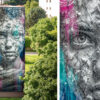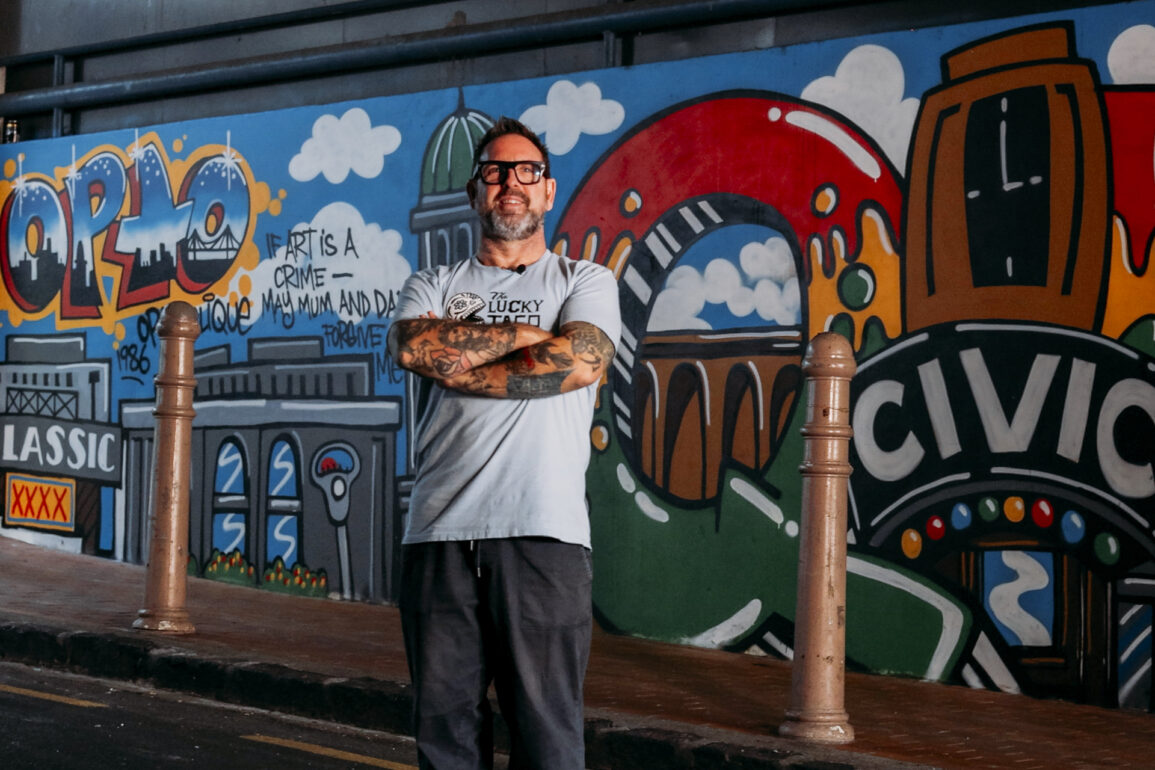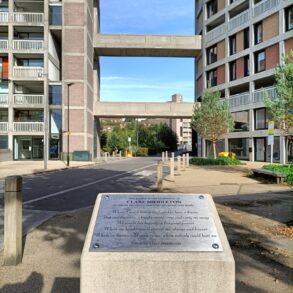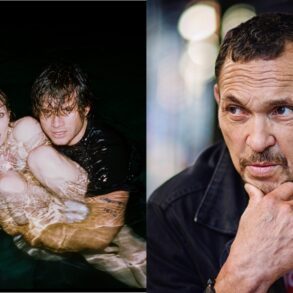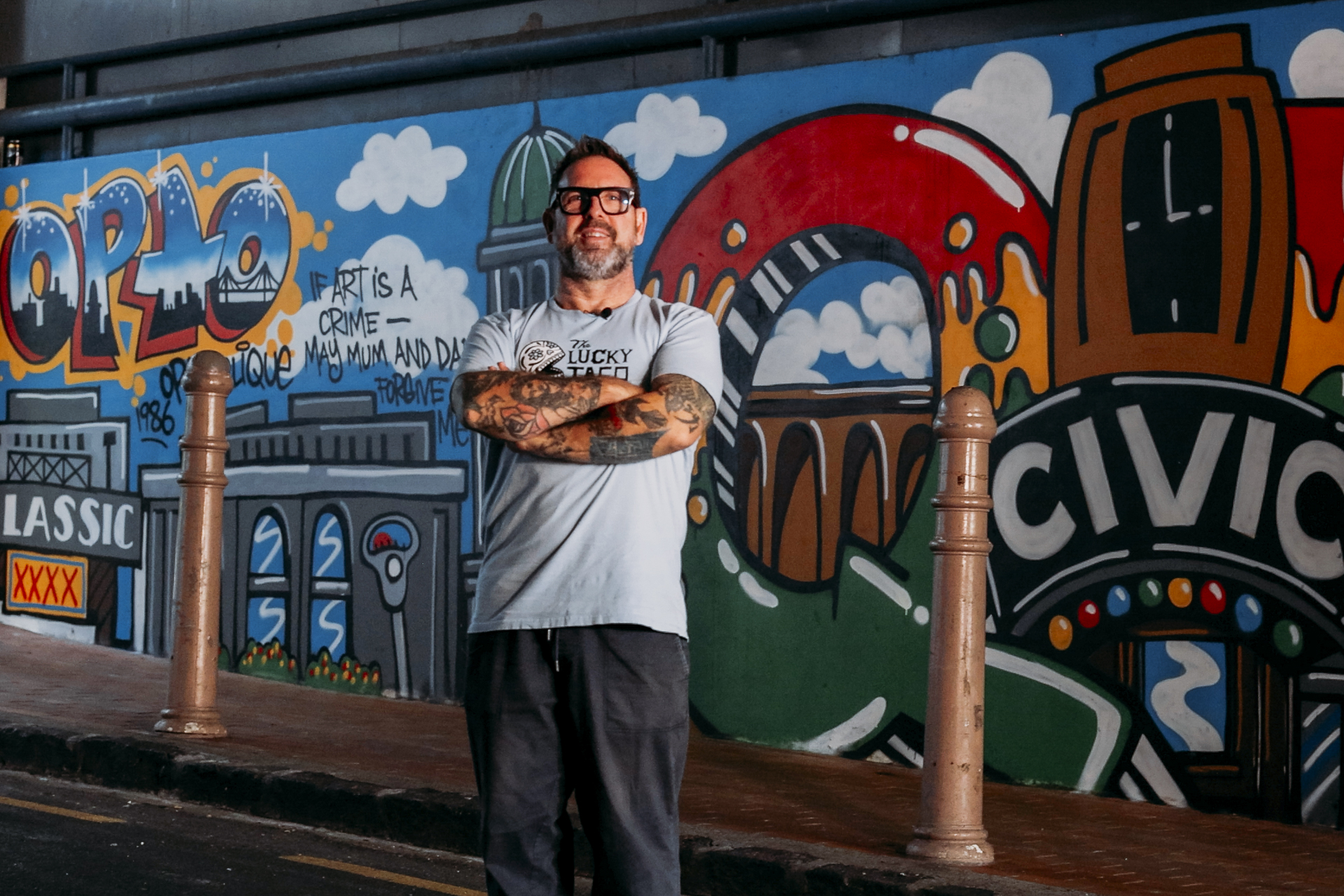
Standing in an alleyway off Durham Street West with a constant stream of delivery trucks punctuating the silence, Otis Frizzell reflects on the mural he created with his father 40 years ago.
The mural, depicting Queen Street in 1986, has become an integral element in midtown’s artscape, and seemingly it will never grow old.
Read about the hidden gems of midtown at Our Auckland.
We asked Otis why a mural like this ages gracefully, why it is now part of midtown’s story, and how pleased he is that Auckland Council has enabled its renewal.
This Q&A is part of an occasional series shining light on the regeneration of midtown and some of the people who are playing a part in it. The Auckland Council group announced an investment of $155million in multiple projects to regenerate midtown in September 2021. Many are delivered already.
[embedded content]
Our Q&A with Otis Frizzell:
How did your mural come about in 1986?
It was a long time ago when I did this mural. The concept that I gave Auckland Council at the time was I would do a caricature of Queen Street and I would paint my favourite buildings, or buildings that represented Queen Street at the time.
I would pluck them out and make them larger than life and write Queen Street City Beat. I’d just seen Beat Street, which was my favourite movie back then.
It was a New York movie about graffiti art and break dancing and hip hop. I was obsessed with Beat Street. I called the mural Queen Street City Beat. It was very on-trend at the time. I included McDonald’s, where I used to hang out after school. I tried to cram all my Auckland imagery onto the wall.
How did the process work?
So I just sketched it up. It was a mammoth piece of art and I came here with Dad and we just got started.
What you do is you get a light-coloured spray can, which is like a pencil on a big wall, and you just start sketching up the design, stepping it out 10 metres, 10 metres – grid it all out until it fits – and then we just started painting.
Honestly, you see two people against this wall – it’s bonkers, it’s big. I’ve never done anything anywhere near this big, but we just got into it.
How does it feel to be at the centre of the midtown regeneration?
The midtown regeneration is a good idea because it’s been pretty hard and pretty grim around here for a while. I’m right behind it.
I’ve been fortunate enough to travel in my life, and I’ve been to London, I’ve been to New York, I’ve been to Paris, and I’ve been to places that have trains coming into the centre of town.
Why is art important in a city?
I know we’re not competing with other cities around the world, but if you go to any city, you go to the laneways in Melbourne or the Latin Quarter in San Francisco, it’s the art that brings vibrancy to a city.
People will go into town just to see the art. And when they’re there, they’ll get a sandwich. And when they’re there, they’ll get a beer or they’ll take a walk around. Art can actually bring people into a city.
Kids respond to it. It’s vitally important. And even alleyways like this, off Durham Street West. Places you can seek out and go: ‘oh man, did you see that?’ Take a photo, put it on Instagram. It’s cool. It gives a vibe to the city.
I used to hang out in the city a lot when I was young. I was here all the time at night. And in the daytime, I was a mid-city Auckland kid.
I grew up here in the ‘80s and the ‘90s, and it was awesome. But for years, now I’m a bit older, I don’t come into town very much, but if I could jump on a train and knock around a bit I would probably come in more.
How did the opportunity to renew this mural come about?
So I was very excited when Auckland Council asked me to renew this piece because when I did it, of course, when you do something 40 years ago, you never think it’s going to be important or have any cultural significance or historical significance or anything.
I just did it because it was fun. I was painting a wall with my Dad.
As the years went on, some of it got painted out, some of it got built over, some of it got trashed. It had faded and was pretty crappy, so it was kind of like: get rid of it or make it nice.
I tried really hard to take it back to its freshest originality. I didn’t want to modernise it. I didn’t want to change it. I wanted to keep it as close to the original colours and the fruity ‘80s style that I’d done it in. So that was really important to me.
Can you tell us about the new byline?
There was an artist in Beat Street called RAMO. He famously, on one of his big pieces, wrote ‘if art is a crime, may God forgive me.’ So I thought I’m going to do a memorial to my sort of God.
Since I don’t really believe in God, but I definitely believe in my Mum and Dad, I wrote, ‘if art is a crime, may mum and dad forgive me.’ So that was my big homage to the world of graffiti and where it all started in New York back in the day.
I was super stoked to get the call from Auckland Council to breathe some new life into this old girl. It had recently come to my attention that it was the oldest piece of street art or graffiti art left in Aotearoa. Maybe the oldest or definitely one of the oldest.
So of course I chose to revamp it and hopefully it’ll get another 40 years of life and contribute to the colour of midtown in Auckland.
Why art?
Art just makes a city beautiful – just like a tree or a forest. You can be an educated fine artist or a commissioned graffiti artist like me. It gives our place in the world its localised identity, visually.
The nice thing is that I’m sort of part of a crew here now which is awesome. There’s some really beautiful work around here. I’m good friends with Joe Sheehan and I think his work Lost & Found is amazing. So I’m in good company in this part of town.
There’s a lot of great art in midtown that people need to check out.
This post was originally published on this site be sure to check out more of their content.


